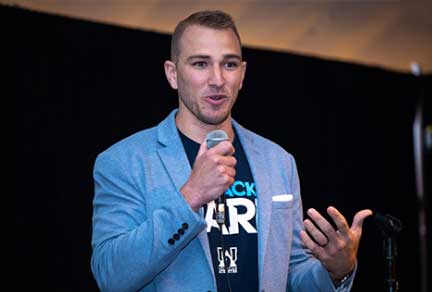Non-Clinical Considerations for Antibody Drug Conjugates (ADCs)
This is the second in a four-part series about challenges and best practices in developing Antibody-Drug Conjugates, or ADCs.
While ADCs are showing great promise in treating disease, particularly in oncology, toxicity, and safety are paramount considerations in their development. Pharmacodynamics, pharmacokinetics, and toxicology are the focus of the non-clinical aspects of the clinical trial application, as well as briefing documents requesting scientific advice and regulatory dossiers for marketing authorization.
These are highly complex products, comprising the monoclonal antibody, the drug linker, and the conjugated drug substance or payload.
Depending on the novelty of each part, the non-clinical development strategy will differ.
Providing a strong pharmacological, pharmacokinetic, and toxicological rationale for the strategy is key. The main goal for safety is to identify the target organs for toxicity and the off-target toxicity related to the payload of the drug, which guides dose selection throughout clinical trials. The non-clinical strategy helps identify parameters over the lifecycle of the product, such as supporting dose selection in FIH/phase I studies, safety monitoring in humans during clinical trials and after marketing authorization, the risk management plan, and adequate safety information on the label.
There are many challenges to consider in devising a non-clinical strategy. The following highlights a few.
In vivo studies
One of the most challenging aspects of the non-clinical strategy is to provide studies in vivo to show the product's efficacy. Determining the relevant animal species is essential, considering that a species-specific difference may exist in the target expression and distribution. For example, what is the half-life expectancy for the stability in plasma in the different animal species? Does the distribution exceed differences in the pharmacokinetics between animals and humans? Moreover, there are limitations in the immunodeficient models for studying immune-mediated effects and potential discrepancies between animal models and human tumors.
There are emerging trends in ADC animal models to consider in this regard, for example, humanized and mouse models with reconstituted human immune systems. Other new tools include the combination of in vivo and in silico models and multi-organ chips for disease modeling.
Manufacturing processes
Different manufacturing processes could imply different batches and affect the pharmacodynamics of the product. How representative are the non-clinical batches compared to the clinical batches?
Drug-to-antibody ratio
Another important aspect of the non-clinical strategy is determining the drug-to-antibody ratio. What is the contribution of the number of molecules relative to the antibody payload that could affect efficacy?
Off-target toxicity and potential immunogenicity
Are animal species selected for toxicology assessment relevant to show potential off-target toxicity or potential immunogenicity as infusion reactions?
Other toxicities
Is our toxicology strategy able to detect other aspects like cardiovascular safety or phototoxicity?
Anti-drug antibodies
Is there a loss of activity caused by the formation of anti-drug antibodies or even mutations in the target that could have an impact on pharmacokinetics or the pharmacological effect?
Drug-drug interaction
Are in vitro drug-drug interaction studies needed if the ADC is administered with other medicinal products?
Potential improvements
In future development of ADCs, there is room for improvement: in the specificity of the target, for example, and in reducing toxicity and drug resistance. New technologies for linkers will potentially heighten stability, which will have an impact on efficacy and safety. Another possibility is new conjugates that are not linked to cytotoxic substances but to other chemicals targeting different antigens or even external antigens. For example, developing peptide drug compounds and combining ADCs with other therapies such as immunologic drugs.
Recommendations
If proper pharmacological and toxicological rationale is provided and adequate parameters are included in the general toxicity studies, the non-clinical package could feasibly be simplified, for example:
- Using a surrogate antibody
- Eliminating some studies, for example, single dose, carcinogenicity, reproduction toxicity, or phototoxicity
- Eliminating standalone safety pharmacology or local tolerance studies, or study of the linker alone
We highly recommend consulting with regulators or other authorities for scientific advice. Regulators are often open to flexibility and offer support in accelerating and facilitating the development of these complex products. Additionally, some of these concerns can be handled in the summary of product characteristics (SPC) or identified in the risk management plan.
How we can help
Our strong team of commercial strategists, clinicians, former regulators, and market access experts can partner with you to de-risk your drug development and illuminate the path to commercial success. It is an exciting time for the industry, and we look forward to joining you in the journey to bring important innovations to patients.
Parexel Biotech offers the personal, responsive, and committed approach of a small CRO, with all the benefits of a large CRO, to help you develop life-changing treatments for patients.
Related Insights
Webinar
Unlocking Success in Obesity Clinical Trials: Mastering Patient Engagement and Retention
May 15, 2025
Blog
Master Protocol Trials: What Are the Elements of Success?
Dec 1, 2021
Article
Getting to ‘No’ fast is more important when you are small
Mar 4, 2022
Article
How biotechs can strengthen their value story with advanced analytics
Feb 15, 2022
Blog
Three Ways Early-Stage Companies Can Attract Investors
Feb 3, 2022
Podcast
Funding Biotech Innovation: How to Attract Investors
Jan 18, 2022
Article
How emerging biotechs can enter the Chinese market and prosper
Jan 18, 2022
Video
Biotech Showcase: Fireside Chat with Jamie Macdonald
Jan 3, 2022
Article
Three strategies for articulating a coherent product value story
Dec 18, 2021
Case Study
Case Study Marketing Authorization Transfer
Nov 25, 2021
Playbook
Insights from the 2022 R&D Innovation Survey
Feb 17, 2023
Case Study
Case Study Lifecycle maintenance
Nov 25, 2021
Related Insights
Webinar
Unlocking Success in Obesity Clinical Trials: Mastering Patient Engagement and Retention
May 15, 2025
Blog
Master Protocol Trials: What Are the Elements of Success?
Dec 1, 2021
Article
Getting to ‘No’ fast is more important when you are small
Mar 4, 2022
Article
How biotechs can strengthen their value story with advanced analytics
Feb 15, 2022
Blog
Three Ways Early-Stage Companies Can Attract Investors
Feb 3, 2022
Podcast
Funding Biotech Innovation: How to Attract Investors
Jan 18, 2022
Article
How emerging biotechs can enter the Chinese market and prosper
Jan 18, 2022
Video
Biotech Showcase: Fireside Chat with Jamie Macdonald
Jan 3, 2022
Article
Three strategies for articulating a coherent product value story
Dec 18, 2021
Case Study
Case Study Marketing Authorization Transfer
Nov 25, 2021
Playbook
Insights from the 2022 R&D Innovation Survey
Feb 17, 2023
Case Study
Case Study Lifecycle maintenance
Nov 25, 2021



